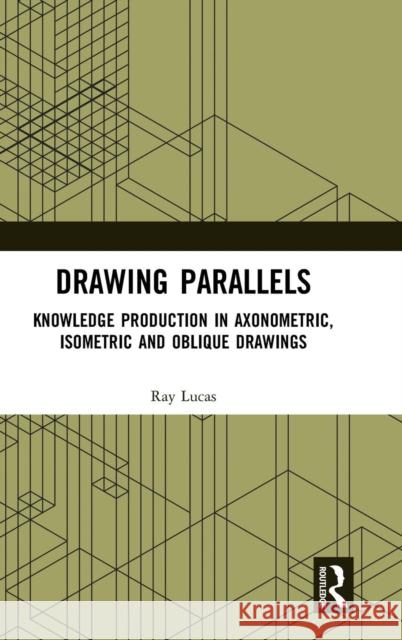Drawing Parallels: Knowledge Production in Axonometric, Isometric and Oblique Drawings » książka
Drawing Parallels: Knowledge Production in Axonometric, Isometric and Oblique Drawings
ISBN-13: 9781472412836 / Angielski / Twarda / 2019 / 204 str.
Drawing Parallels: Knowledge Production in Axonometric, Isometric and Oblique Drawings
ISBN-13: 9781472412836 / Angielski / Twarda / 2019 / 204 str.
(netto: 669,47 VAT: 5%)
Najniższa cena z 30 dni: 654,86
ok. 22 dni roboczych
Dostawa w 2026 r.
Darmowa dostawa!
Over the centuries, architects and designers have used inscriptive practices as a form of knowledge production, which is an alternative to the written text. This book argues that drawing, diagramming, and notation are equivalent to extended discourse in writing and, moreover, offer significantly different insights, not easily accessible through models of discourse analysis, critical theory, or observation. Simply stated, the conventional understanding wrought through architectural histories and theories only gives a part of the story: it is here suggested that by retracing the marks made by architects, we can begin to engage more directly with his practice. Understanding the drawings as scores to be re-enacted is one way of describing this process: it is only by performing the drawing that aspects of it are revealed. Over the course of the author's research project, An Anthropology of/with Architectural Drawings, he redrew works held by the Drawing Collection at the Canadian Centre for Architecture, focusing on the axonometric as an under-theorised form of representation which lies between orthographic and perspective drawing conventions. The book uses anthropological ideas of skilled practice in order to explore why axonometrics are important to architecture, and questions the degree to which the drawing convention influences the forms produced by architects. Based on the author's own theoretical course, it sets axonometric drawing within a historical context and discusses how this type of drawing form has changed with the widespread use of computer aided design.











